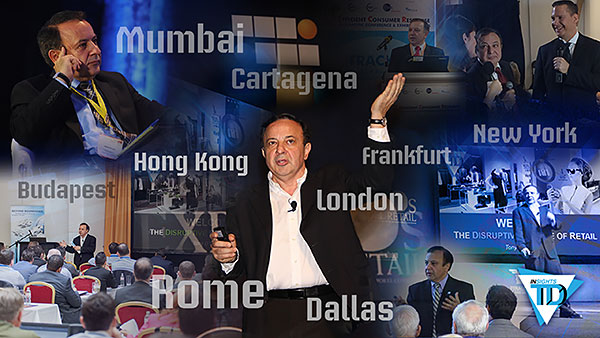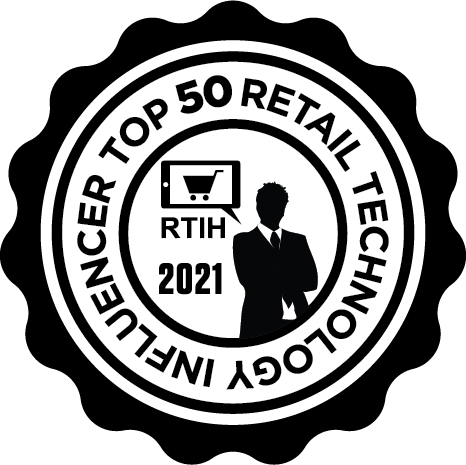The Smartphone, Bar Code, Cash Register, and Hype Cycle

At a recent growth and innovation summit had the pleasure of once again speaking about the future of retail. To engage the audience in an innovation conversation decided to ask a series of historical technology questions.
Out of the sixteen researched questions, following are my favorite top five:
Name One of the Top Five Greatest Inventions of All Time
Raconteur recently published an insightful infographic on the top 60 inventions of all time after surveying over 400 scientists, tech journalists, academics, authors, and interested readers. The top five inventions of all time include the World Wide Web, printing press, wheel, electricity, and writing.
"Inventions showcase the best of human creativity, and can almost always be linked to what great ideas came before...Somewhere at the intersection between needs and dreams, practicalities and possibilities, are the foundation of great inventions."
Name the Company that Invented the Smartphone
Nicknamed 'Simon', the first smartphone was introduced by IBM in 1992. Features included a calendar, address book, calculator, email service, and a touch screen.
"By today's standards, of course, Simon was clunky and outrageously priced. But for a do-it-all gizmo in the mid-'90s, its $1,100 price tag should elicit a mere shrug from most of us nowadays. And if you signed a two year agreement with BellSouth, you could get it for $900; that subsidized price eventually dropped to $600."
Despite its features, "Simon spent a mere six months on the market, with around 50,000 units sold. Business Week's profile of the device cited a weak battery - it lasted around an hour - and the cool factor of svelter flip phones as contributing to Simon's demise."
Name the Decade the Bar Code Was Invented
In 1948, Bernard Silver overheard a conversation in the halls of the Philadelphia's Drexel Institute of Technology. The president of a food chain was pleading with one of the deans to undertake research on capturing product information automatically at checkout. Silver mentioned the idea to a friend Norman Joseph Woodland, a 27 year old graduate student and teacher at Drexel. The two filed a bar code patent on October 20, 1949 and it was granted in October 1952.
In 1951, Woodland joined IBM where he hoped his idea would flourish. IBM tried a couple of times to buy the patent for less than what the inventors thought it was worth. The patent was eventually sold to Philco for $15,000 in 1962 who later sold it to RCA.
On June 26, 1974, the first item, a pack of Wrigley chewing gum was scanned at a Marsh Supermarket in Troy, Ohio in the United States.
What Was the Primary Issue that Drove the Invention of the Cash Register?
"The cash register was invented in 1879 by James Ritty, a saloonkeeper in Dayton, Ohio. He patented a machine with a mechanism similar to one he had seen count the revolutions of an ocean liner's propeller in its engine room. His 'Incorruptible Cashier' used metal taps with denominations pressed into them to indicate the amount of the sale. There was a bell to 'ring up' sales."
John H. Patterson, a store keeper, bought the rights to Ritty's patent for $6,500 in 1884 and formed the National Cash Register (NCR). Why was Patterson interested in the cash register?
"We were obliged to be away from the store most of the time so we employed a superintendent. At the end of three years, although we had sold annually about $50,000 worth of goods on which there was a large margin, we found ourselves worse off than nothing. We were in debt, and we could not account for it, because we lost nothing by bad debt and no goods had been stolen. But one day I found several bread tickets lying around loose, and discovered that our oldest clerk was favoring his friends by selling below the regular prices."
As with James Ritty who was concerned where the money was going in his saloon, the primary driver for the invention of the cash register was retail loss prevention.
Where in the Current Gartner Hype Cycle Can You Find 'The Internet of Things'?
The Gartner Hype Cycle maps new technologies across five adoption phases: Technology Trigger, Peak of Inflated Expectations, Trough of Disillusionment, Slope of Enlightenment, and Plateau of Productivity.
In the 2015 Hype Cycle, 'The Internet of Things' is in the Peak of Inflated Expectations. As defined by Gartner, at the Peak of Inflated Expectations, "early publicity produces a number of success stories — often accompanied by scores of failures. Some companies take action; many do not."
Lessons from the Top 5 Innovation Questions
- The World Wide Web is the correct choice as one of the greatest inventions of all time. Its impact on disruptive business models is just getting started.
- Most in my audience were surprised that IBM invented the Smartphone. Invention was ahead of its time.
- Similar story on the bar code. It took almost 22 years for the first item to be scanned in an actual retail store.
- NCR has had a colorful history and had many firsts (including scanning the first bar code in 1974). The POS industry continues to be disrupted.
- While it may be hype for some, successful business models continue to emerge from the 'Internet of Things'.
There are lots of virtual and physical connections between all the technologies discussed in this post. Timing and silo linear thinking led to multiple of the companies inventing these products missing major future growth opportunities.
The pace of change is accelerating. Disruptive solutions will continue to emerge, most driven by the World Wide Web. Take action, it's easier than ever to innovate and quickly reach Gartner's Plateau of Productivity.

















